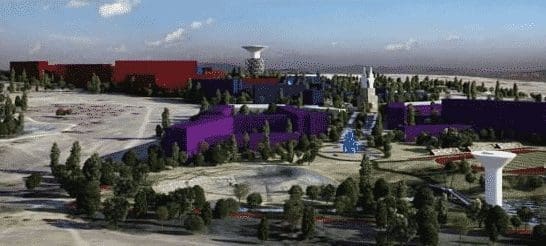At President Ramaphosa’s first State of the Nation (SONA) address in 2019, he encouraged South Africans to “dream big” as he announced his own dream of creating the country’s first interconnected Smart City. This would entail the establishment of an urban settlement defined by the sustainability of its investment in human and social capital, transport and ICT infrastructure, and economic development – all of which would contribute towards a much higher quality of life for its inhabitants.
While this might sound utopian, especially in South Africa, it’s a concept and reality that is surprisingly attainable with the right infrastructure and connectivity partners at its core. So how far are we really from reaching this ambition?
Ambitious vs astute
Two years later at SONA 2021, it was revealed that the Lanseria Smart City is now “a reality in the making”, with the draft masterplan released at the end of last year. But to achieve this goal, we first need to understand that smart city strategies begin and end with people who are empowered by technology. As McKinsey affirms, being smart is not just about installing digital interfaces in traditional infrastructure. It is also about using technology and data purposefully to make better decisions to deliver a better quality of life. The key to realising ambitious plans like these is to partner with specialists in making astute decisions when it comes to interconnected, smart technologies.
Our current state
With the UN declaring Internet access a human right, many people are realising that online connectivity is just as important as other services like water or electricity. Smart cities are the encapsulation of achieving the 17 Sustainable Development Goals (SDGs), as set out by the United Nations. Recent research for the ESI Thoughtlab’s Smart City Solutions eBook surveyed and benchmarked 167 cities across six world regions – Africa, Asia Pacific, Europe, Latin America, Middle East, and North America – to analyse their use of smart technologies and data analytics across all parts of their urban ecosystems. The study also assessed which cities are ahead in using digital solutions and technologies, together with public-private partnerships and policy initiatives to achieve their social, environmental, and economic goals. Cities were classified based on their progress regarding how they are harnessing technology and data across the urban domains, as well as their ability to foster citizen and stakeholder engagement. Of the cities included, 29% were classified as beginners, 49% as intermediates, and 22% as smart city leaders.
The study also looked at in-depth data on the cities’ investments, outcomes, and returns. It was noted that African cities are the least advanced in using data and are the furthest behind in using digital solutions and other practices to engage their citizens. According to Gerald Uche Maduabuchi, contributor to the eBook, “Africa faces the most challenges in meeting the SDG commitments, with its high levels of environmental degradation, poverty, and unemployment. However, social media and high mobile broadband penetration provide some unique opportunities for smart city solutions.” It appears that despite having the second smallest average technology budget in a sample of this size, Africans still have bold ambitions to live in smart cities, alongside metro citizens in other parts of the world.
Hope for the future of South African smart cities
In South Africa, the Ekurhuleni municipality was rated as an ‘Advancer’ city, based on its SDG progress, giving it a smart city maturity level of ‘intermediate’. This implies that progress is already being made locally using technology and data across urban domains in consultation with globally recognised connectivity and cloud services suppliers. Partnerships between government, business, and these specialist ICT suppliers are integral to enabling more cities to realise their interconnected and sustainable development goals.
Where to from here?
A key precondition for smart city initiatives is access to the Internet and connectivity availability. In South Africa, this is constrained by high data costs, making high-quality connectivity difficult for the majority. A first step for municipalities to enable smart city initiatives could be the provision of free Wi-Fi services in public spaces, as has been implemented successfully in Johannesburg and the City of Tshwane. Another consideration is the use of smart metering for electricity and water. This can help to facilitate and enable the beginnings of a smart city.
The Smart City Solutions study also revealed that the biggest smart investments that African cities are currently making are in mobile, biometrics, IoT, and cloud technologies. This is specifically where the private sector and government need to partner with reputable ICT suppliers who understand their central role in enabling and realising our united smart city ambitions. Connectivity infrastructure remains the main arterial system which gives sustaining life to the heart of our smart cities, and is best left in the hands of those who share that same vision of a smart future.
- Steve Briggs, Chief Sales and Marketing Officer at SEACOM
